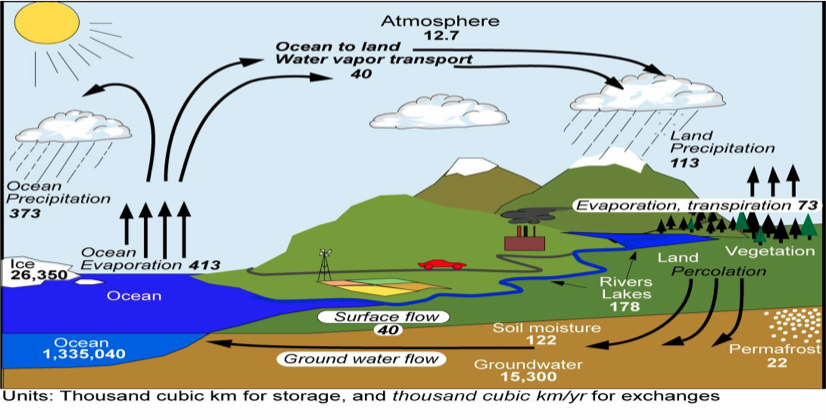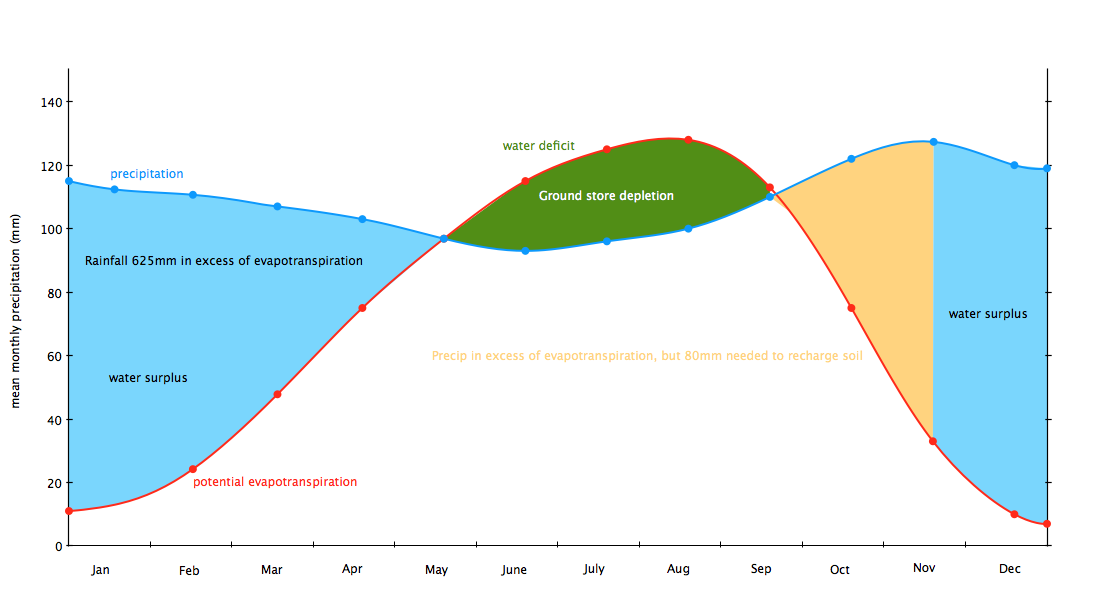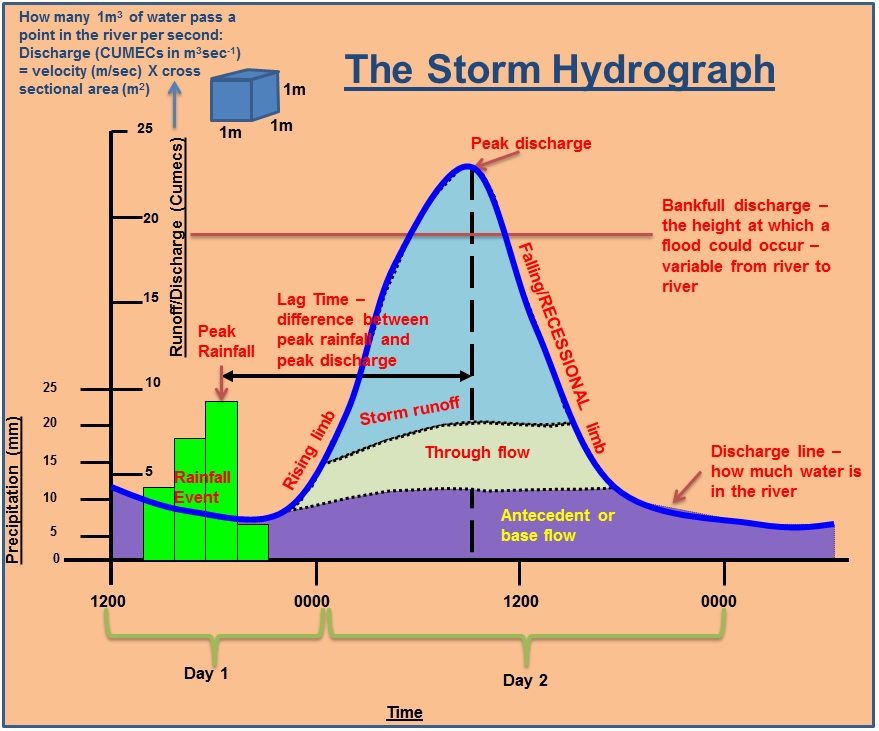water and carbon
1/30
There's no tags or description
Looks like no tags are added yet.
Name | Mastery | Learn | Test | Matching | Spaced |
|---|
No study sessions yet.
31 Terms
inputs
energy or matter added to a system
outputs
energy or matter leaving system
stores
where energy or matter builds up
flows
energy or matter moves from one store to another
boundaries
limits of the system
open systems
energy and matter can enter and leave an open system
example drainage basins
closed system
matter can’t enter or leave a closed system
energy can enter and leave a closed system
eg carbon cycle
positive feedback
mechanisms amplify the change in inputs or outputs
system responds by increasing the effects of change moved further away from previous state
negative feedback
mechanisms counteract the change in inputs or outputs
system responds by decreasing the effects of the change keeps it closer to its original state
earth has 5 subsystems
cryosphere
biosphere
lithosphere
hydrosphere
atmosphere
cryosphere
includes all the parts of the world where it is cold enough for water to freeze
lithosphere
outermost part of earth and includes the crust and parts of the mantle
biosphere
part of earth where living things are found. includes all the living parts of the earth
hydrosphere
includes all of the water on earth. it may be in liquid ,solid,gas form . it can also be saline or fresh
atmosphere
is the layer of gas between the earths surface and space , held in place by gravity
earths freshwater distribution
69% is in cryosphere
30% is groundwater
0.3% is liquid freshwater
0.04% is stored as water vapour
global hydrological cycle
water is constantly cycled between different stores

evaporation
occurs when water changes state into a gas - water vapour - it gains energy normally from solar radiation increases atmospheric store
magnitude of evaporation depends on location and season
condensation
occurs when water vapour changes state to become a liquid - it loses energy to surrondings - it happens when air containing water vapour cools to its dew point
water droplets can stay in atmosphere or flow to other systems
magnitude of condensation depends on amount of water vapour in atmosphere and temperature
cloud formation and precipitation
essential parts of water cycle
clouds form when warm air cools down,water vapour condenses which causes these water to droplets to form as clouds
they need cloud condensation nuclei to be able to form
cloud formation and precipitation can vary seasonally
things that can cause warm air to cool
other air masses warm air is less dense than cool air . as a result when warm air meets cool air it is forced up above . frontal precipitation
topography- warm air meets mountains air rises .forces it to cool down . - orographic precipitation
convection- sun heats up the ground , moisture on the ground evaporates and rises up a column of warm air . as it gets higher it cools. - convective precipitation.
cryospheric processes
such as ablation and accumulation change water stored as ice
during periods of global cold inputs are larger than outputs
variations have different time scales
drainage basins
can be open local hydrological cycles
drainage basin is the area surrounding the river where the rain falling onto land flows into river
boundary of a drainage basin is the watershed
drainage basins are open systems with inputs and outputs
water comes into the system as precipitation and leaves via evaporation , transpiration and river discharge
drainage basin inputs
precipitation
drainage basin stores
interception
vegetation storage
surface storage
soil storage
groundwater storage
channel storage
drainage basin flows
infiltration
overland flow
throughfall
stemflow
throughflow
percolation
groundwater flow
baseflow
interflow
channel flow
outputs
evaporation
transpiration
evapotranspiration
river discharge
water balance
shows balance between inputs and outputs
in wetter seasons precipitation exceeds evapotranspiration which will create a water surplus
in drier seasons precipitation is lower than evapotranspiration so ground stores get depleted
so at the end of dry season there is a deficit of water in ground recharged in the next wet season

hydrographs
river discharge is measured in cumecs
peak discharge - this is the highest point on the graph where river discharge is at its greatest
lag time - delay between peak rainfall and peak discharge
rising limb - the part of the graph up to peak discharge
falling limb - this is the part of the graph after peak discharge

factors affecting hydrograph
size of drainage basin - larger basins catch more precipitation so they have a higher peak discharge than smaller basins
shape of drainage basin - circular basins are more likely to have a flashy hydrograph than long narrow basins
ground steepness - water flows more quickly downhill in steep sided drainage basins which shortens lag time
rock and soil type - impermeable rocks and soils don’t store water or let it infiltrate which increases surface runoff
variation in water cycle due to natural factors
storms and precipitation - intense storms generate more precipitation and greater peak discharges than light rain showers - the larger input of water causes flows to increase in size
seasonal changes and vegetation - size of inputs flows and stores in the water cycle varies with the seasons - during the winter season temperatures may cause water to freeze which can reduce the size of flow through drainage basins
amount of vegetation affects the amount of interception that is occuring
more vegetation in a drainage basin the more water is lost through evaporation and transpiration